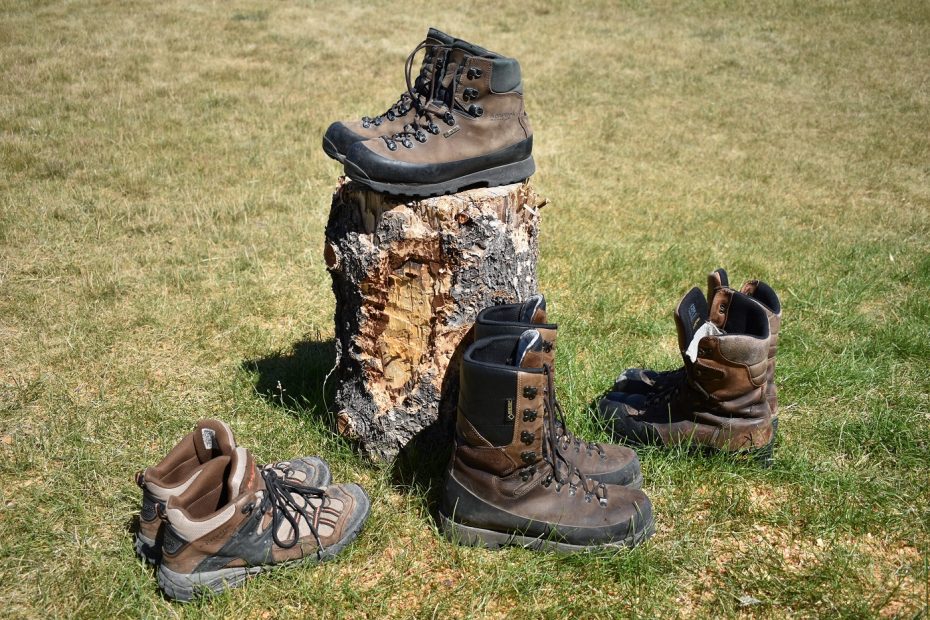
As the old saying goes, the devil’s in the details. This holds true for numerous facets of the outdoorsman’s skill set. Paying attention to the little things a person can improve upon will give you an edge when it comes time to hit the ground running in the fall. From checking zeros on rifles to sharpening knives or making sure there are enough replacement blades, the amount and quality of prep work done will play an important part in a hunter’s overall experience when it’s time to head afield.
One area of preparation that needs more forethought, but is just as important, is a hunter’s footwear. It can take months to properly break in a pair of quality hunting boots so starting well before you need them is key. Picking a pair of boots that will not only meet but exceed your expectations is vital. Species hunted, terrain expected, and personal preference should be taken into account before a hunter pulls the trigger on a new set. Just like most hunting gear categories, there is almost an overwhelming amount of options to choose from.

Mountain hunting boots are generally stiffer and consequently harder to break in than a lightweight hiker. The ankle support they provide comes at a cost when they are first pulled out of a box and slipped on for the first time but once broken in they provide valuable reinforcement to feet and ankles for those steep, rocky sidehills that are sure to be encountered. Early season lightweight boots tend to be more forgiving than their more heavily built counterparts but fill a much-needed role when the conditions are milder and less demanding. These types of boots are tailor-made for warmer weather and shorter hunts where speed and stealth play more of a part than durability and ankle reinforcement (think elk hunting versus antelope hunting).

When needed, I retire a pair of boots after hunting season comes to a close and start shopping around immediately thereafter to give myself and my feet plenty of time to get used to a new pair. As an example, I have a pair of heavily reinforced mountain hunting boots I started to break in last March for a Dall sheep hunt in August, putting numerous miles on them in Montana before heading North.
Once you have chosen a pair of boots that will work for your anticipated outings, it’s time to take them for a walk. Oil them up with a quality leather conditioner of your choice, this will help protect your investment and add life to the uppers as well as make them more pliable. Keep in mind, part of the break-in process is getting your feet used to the boots as well. It takes time to toughen up parts of your feet that aren’t used to the intricacies of a unique boot. Starting with forgiving terrain and short hikes is important to keep tabs on how your feet are reacting to the new footwear for the first few miles of use.

Patience is a key factor in starting the break-in process. Pay attention to any hot spots that are starting on your feet, if left unchecked, these turn into nasty blisters that will put you out of commission for a while. Trying to tough out foot discomfort is a recipe for disappointment and will lead to more trouble than it’s worth. Having a couple of items for foot care along such as clear surgeon’s tape or waterproof cushioning tape will help with any problems that develop as you walk. If you feel a hot or raw spot, stop and put some tape on it as soon as possible to prevent it from worsening into a blister.
If your boot uppers are made of leather, continue to use conditioner on them as needed, after all the hassle of getting a hunting boot comfortable, it would be a shame to have to send them down the road because the leather is deteriorating. Waterproofing compounds will help protect and extend boot life as well. Moisture is the enemy of leather but drying boots fully then re-treating them with conditioner and waterproofing agents can add years to a pair of boots’ life. If the leather is treated with care, the tread will wear out first, leaving you with the option of buying a new pair or perhaps getting the old ones resoled if applicable.
Don’t wait, take inventory of your footwear, do some research and shopping around, buy the best boot you can afford and put some miles on in the spring and summer. With some forethought and planning, that new pair of boots can be turned into tried and true tools for hitting the sticks when hunting season finally rolls around.

